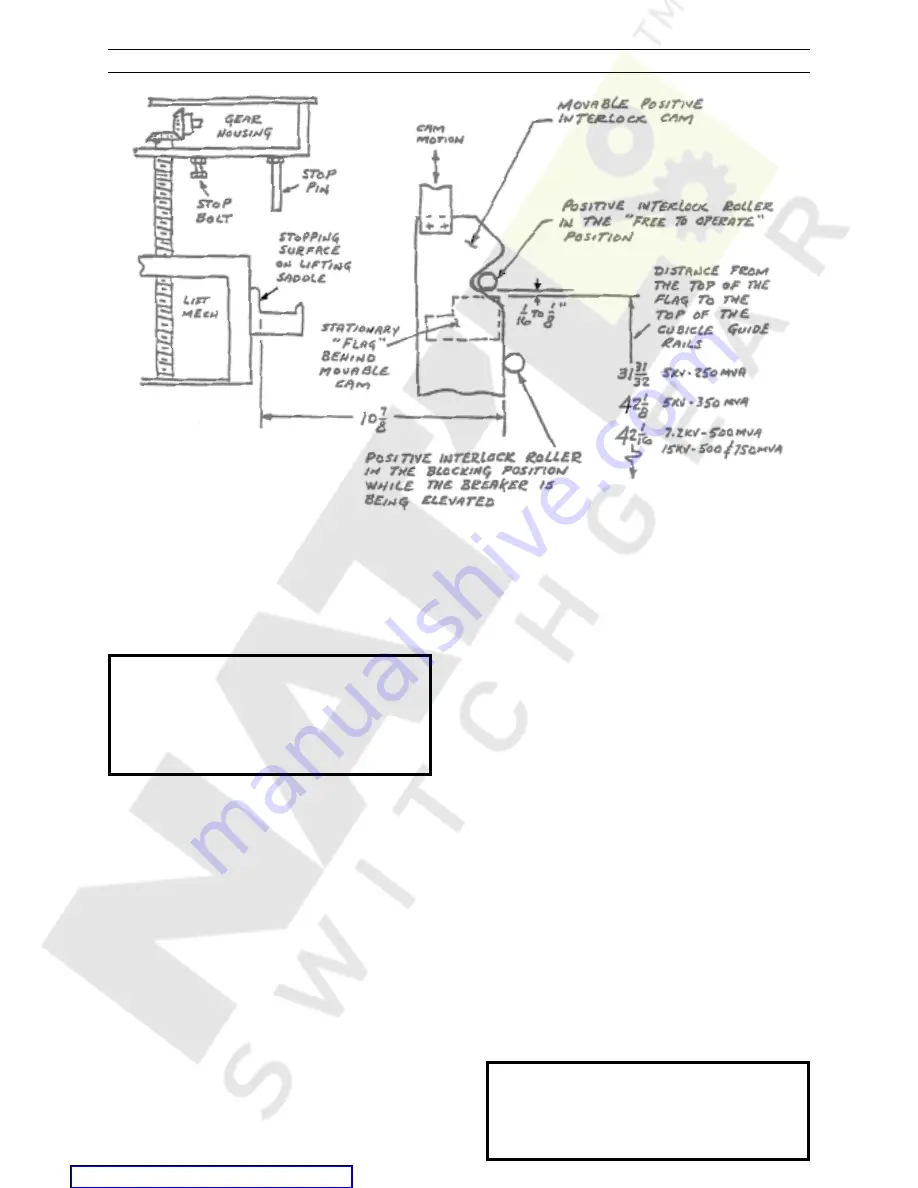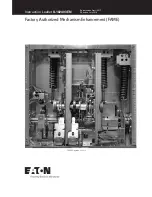
12
4-4 Check for Proper Interlock
and Trip-free Functions Before
Energizing the Breaker
WARNING:
THE PRIMARY EQUIPMENT
SHOULD BE COMPLETELY DE-ENERGIZED
WHILE THE TESTS ARE IN PROGRESS.
DO NOT INSTALL OR REMOVE THE
BREAKER OR MAKE ADJUSTMENTS UN-
LESS THE BREAKER IS OPEN.
To test the function of the positive interlock sys-
tem and trip free function, the following checks
should be made:
1.
Verify that red grease has been rubbed on
the silvered portion of the breaker studs,
ground shoe, and 16 secondary coupler
pins, forming a thin coating for contact
purposes.
2.
Before inserting the New VL vacuum
breaker into the cubicle, verify the cubicle
interlock position by measuring the dis-
tance between (Figure 6) the movable posi-
tive interlock cam to the back of the lifting
saddle of the racking mechansim. This dis-
tance should be 10 7/8” minus 0, plus
1/16”.
Figure 6. Positive Interlock system
PowerVac
®
5kV Vertical Lift
Chapter 4. Installation
3.
Lower the elevating mechanism lifting
brackets until the lifting brackets are in the
fully lowered position. The breaker should
then enter the housing freely. After first
assuring that the breaker is in the open
position, push the breaker into the unit until
it rests against the rear of the front lifting
saddle of the elevating mechanism.The
clearance between the interference block
on the breaker and the interference block
on the interlock mechanism should be from
.063" to .125".
4.
With the breaker in the lowered position,
the positive interlock roller engages in the
lower Vee notch, in the interlock cam plate.
The breaker should be in the opened posi-
tion and the closing springs discharged
as indicated by the flag indicators. (Figure
1, items 4 and 6) Using the manual charg-
ing handle, charge the breaker. Then close
the breaker and recharge. (Figure 7, Item
1). With the elevating motor switch in a
neutral position engage the clutch to verify
the operation of the positive interlock. The
springs will discharge and the breaker will
open.
NOTE:
TABLE 3, FIGURES 6, 52, 53, AND
54 HAVE BEEN PROVIDED TO FAMILIAR-
IZE THE OPERATOR WITH THE EQUIP-
MENT RACKING SYSTEM AND TROUBLE-
SHOOTING.
(-0, + 1/16”)












































